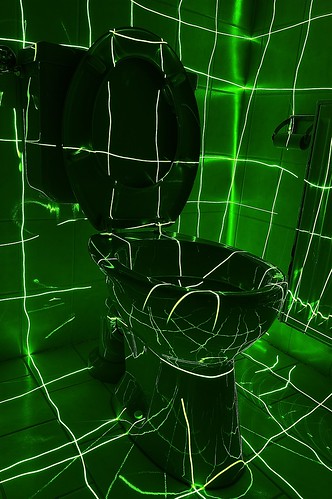Toilets in skyscrapers: energy source?

 It's often said that necessity breeds invention. We need clean energy. We need to go to the bathroom. Why not combine the two?
It's often said that necessity breeds invention. We need clean energy. We need to go to the bathroom. Why not combine the two?
Well, that's what industrial design student Tom Broadbent did with his Highdro Power creation. On Monday, I discussed microbial fuel cell developments in generating electricity from wastewater. Broadbent has a different take on sewage power.
His Highdro Power device is meant to harness the power of plummeting wastewater in the pipes of high-rise buildings. When emptying a tub in a hotel room, Broadbent says he realized a potential energy source was washing down the drain.
In a statement out of De Montfort University, he says:
HighDro Power works by using the water discharged from appliances such as showers, toilets and sinks in high-rise apartments. The water goes down the pipe and hits four turbine blades that drive one generator.
The whole thing was influenced by traditional waterwheels to ensure that any solids passing through had limited effects on whether they could function.
Umm, thanks for solidifying that last detail for us, Tom. Just how many kilowatt/hours are produced by the scheme is not listed. But Broadbent surmises that if a building with seven floors piped its own energy, it could save more than $1,400 a year on power bills. Or the building could sell the electricity to utility companies.
Charlie Sorrel reports in WIRED:
The neat part is that the box is made from off-the-shelf parts along with sections that Broadbent put together in a fab-lab using lasers, CNC-milling and vacuum forming machines. In larger production, then, it should be cheap enough to pay for itself very quickly, and in places like hotels, with their endlessly-emptying baths and showers, it could even turn into a money-maker as the energy is sold back to the grid.
Currently, Broadbent is awaiting results for his prototype's entry in the Institute of Engineering Designers awards and the James Dyson Awards. He hopes to have a working model in a building soon.
Related on SmartPlanet:
Image: Flickr/czsar
Via: Greenbiz.com
This post was originally published on Smartplanet.com
